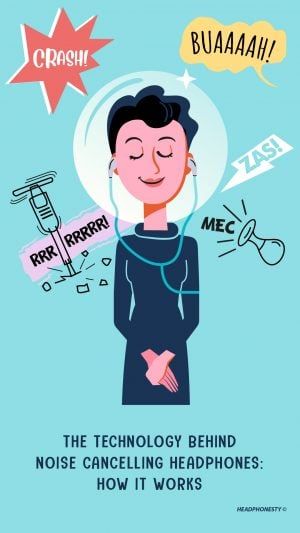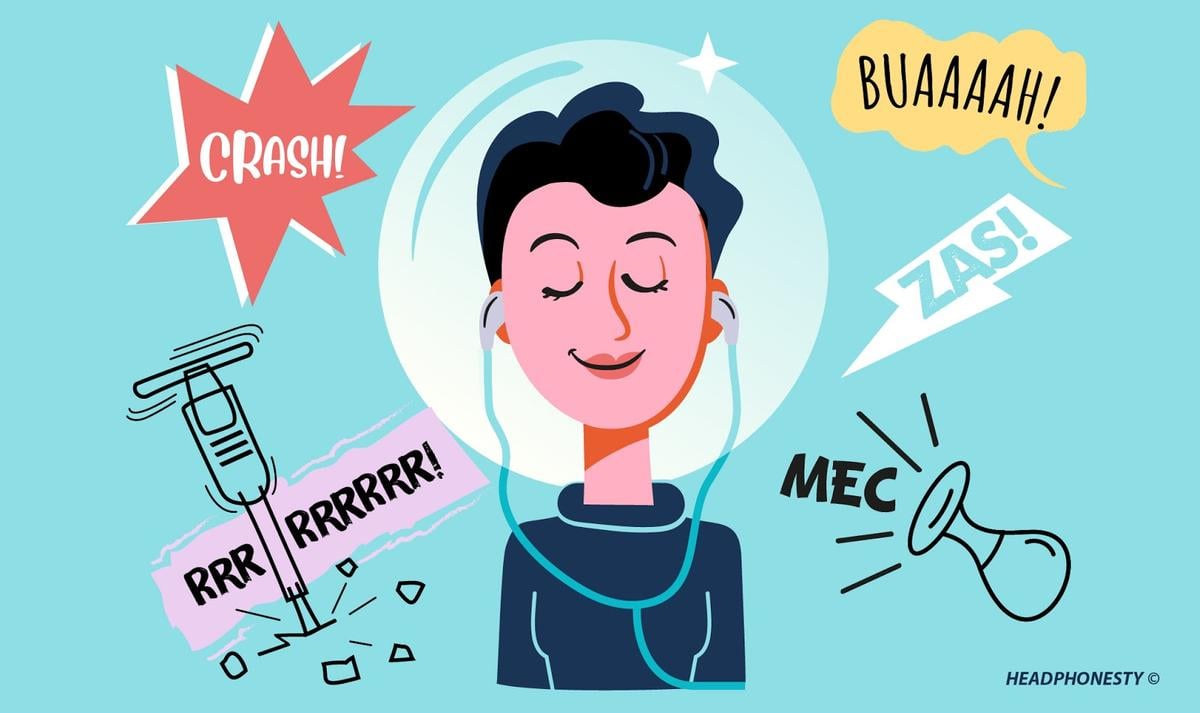Here’s an extensive guide to how noise-canceling headphones work, including what they can (and cannot) do.
Noise-canceling headphones deliver a disturbance-free audio experience by electronically blocking external noise.
But how these devices work remains unclear for some, with most explanations using jargon that confuses readers even more.
Fortunately, a straightforward guide can easily demystify the technology, mechanics, and limitations of noise-canceling headphones. So, read on to learn more!
How Do Noise-Canceling Headphones Work?
Active noise-canceling (ANC) headphones use phase cancellation to detect and block external sounds for better listening. This involves the creation of frequencies that are identical but opposite to the ambient noise frequencies. When played back together, they cancel each other out, resulting in silence.
Here’s a more detailed look into the noise-canceling process:
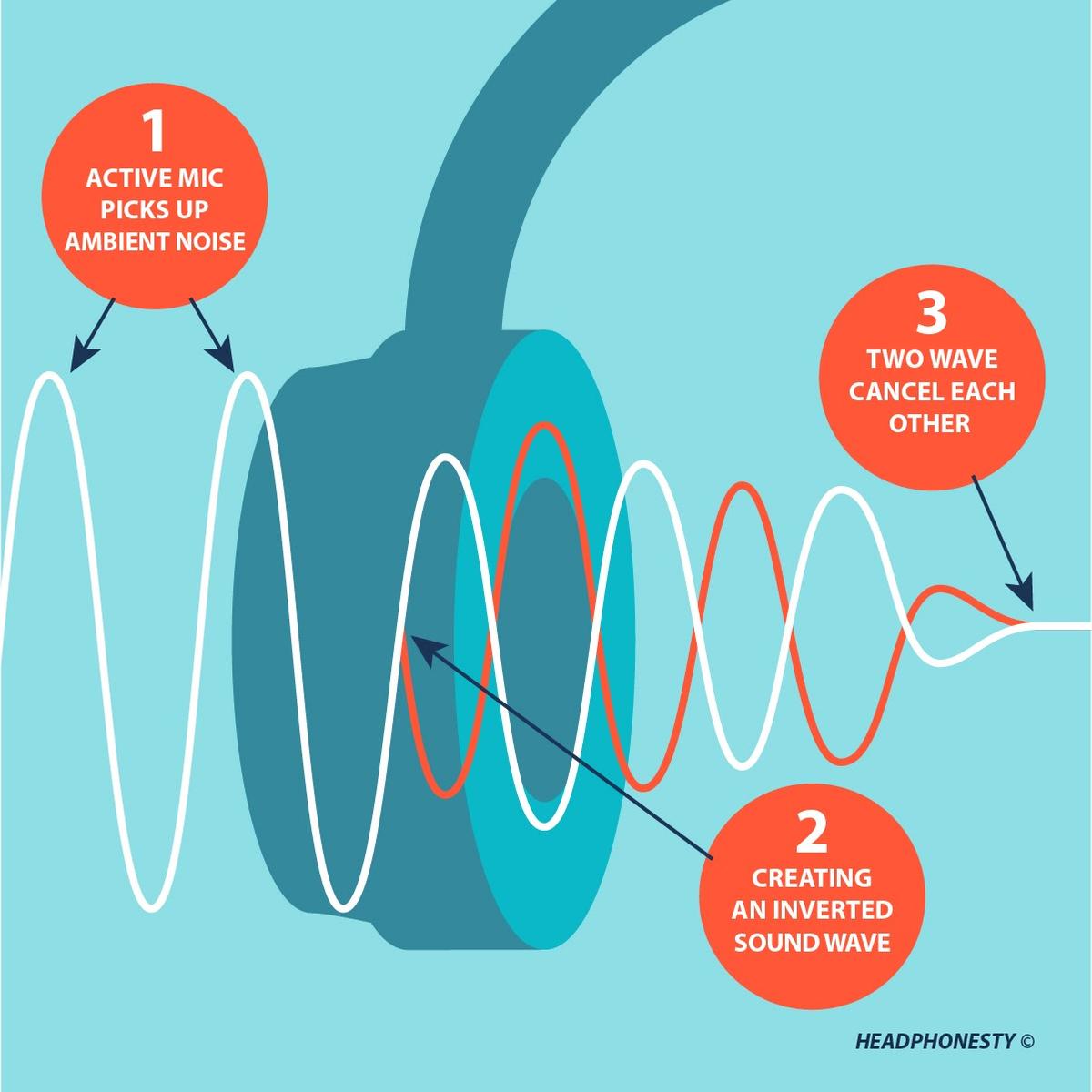
The ANC system, housed within the ear cups, includes a digital signal processing (DSP) chipset, speaker, and microphones.
The microphones capture ambient noise and send it to the DSP chipset. An algorithm then processes the noise and counters it with an opposing signal. This neutralizes external noise when played back through the speaker, producing clearer audio.
Essentially, ANC is like adding +3 and -3, where the resulting value is zero (silence).
Types of ANC Technology in Headphones
| ANC Type | Difference |
|---|---|
| Feedforward ANC | The ANC mic is outside the ear cup. |
| Feedback ANC | The ANC mic is inside the ear cup. |
| Hybrid ANC | The ANC mics are both inside and outside the ear cup. |
| Adaptive ANC | Similar to hybrid ANC, but offers automatic, real-time noise cancellation adjustments. |
Having understood ANC’s fundamental principle, let’s explore the different ANC types available:
Feedforward ANC
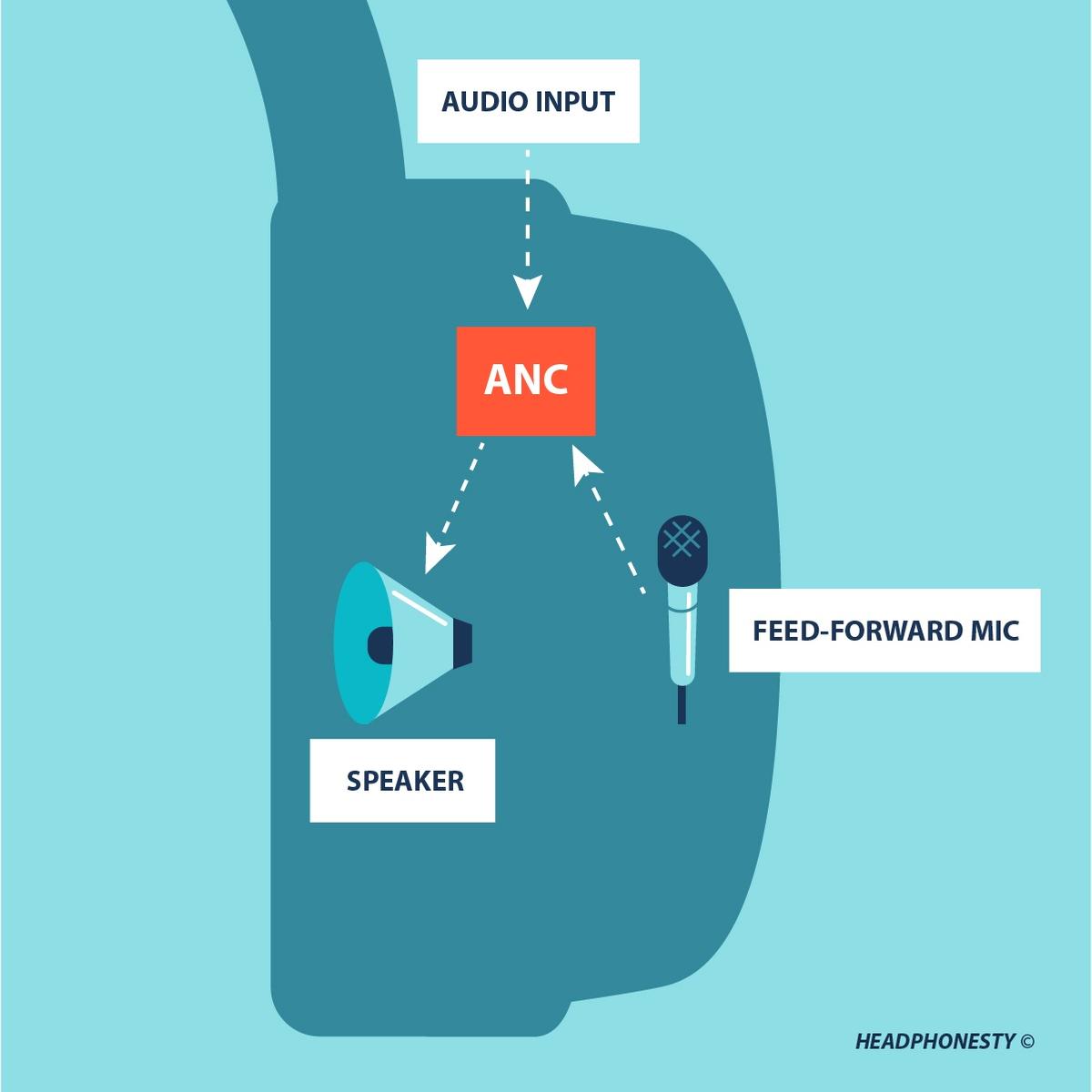
The external ANC mic rapidly detects and responds to ambient noise. However, it lacks self-correction capabilities since it cannot monitor the noise-canceling signal produced by the ANC chip. It also has a narrower frequency range and is susceptible to wind noise.
Feedback ANC
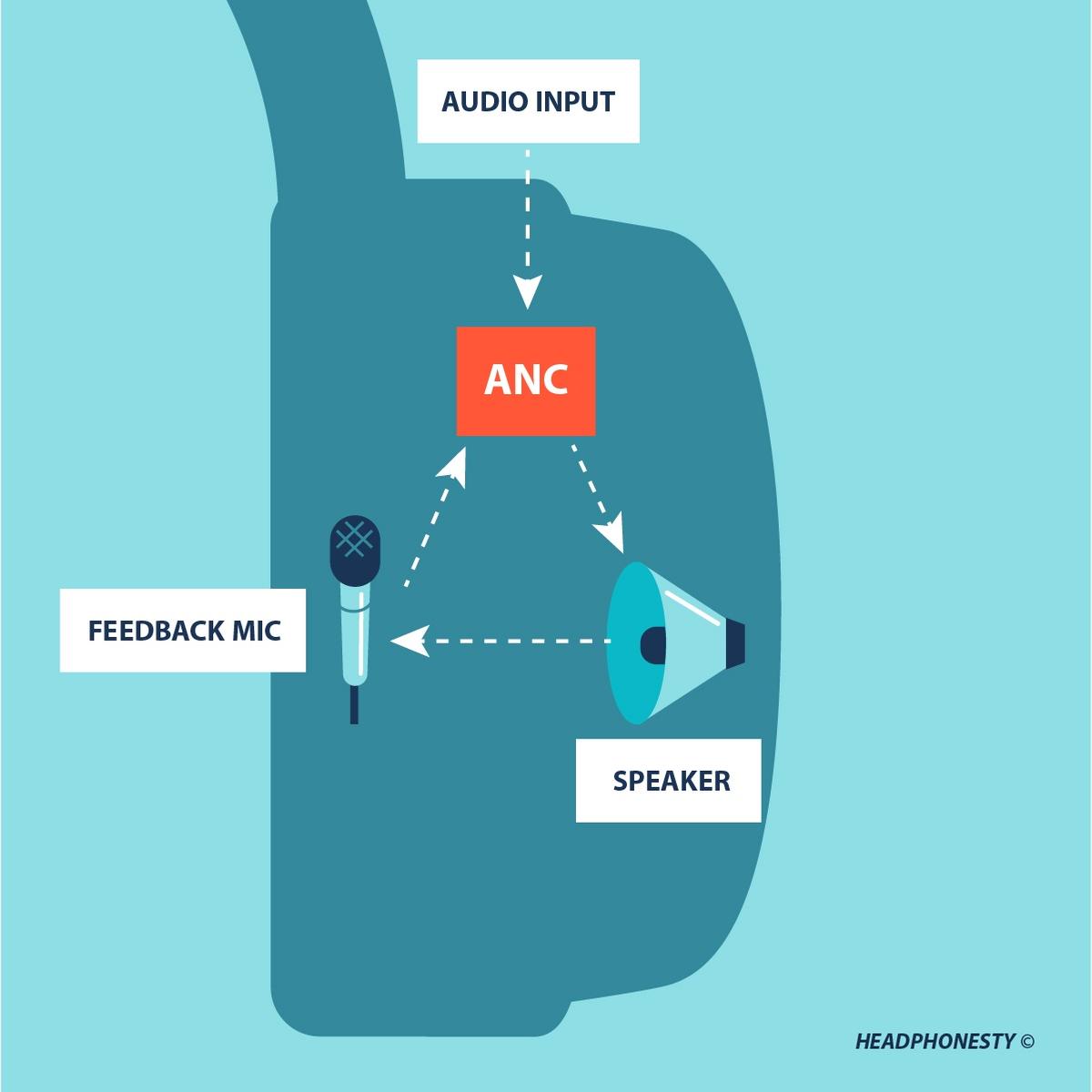
With the ANC mic inside the ear cup, it can hear ambient noise as the listener perceives it. This allows it to adapt and make precise noise-canceling adjustments as needed. Unfortunately, it’s less effective than feedforward ANC in blocking noise in the 1-2 kHz range.
Hybrid ANC
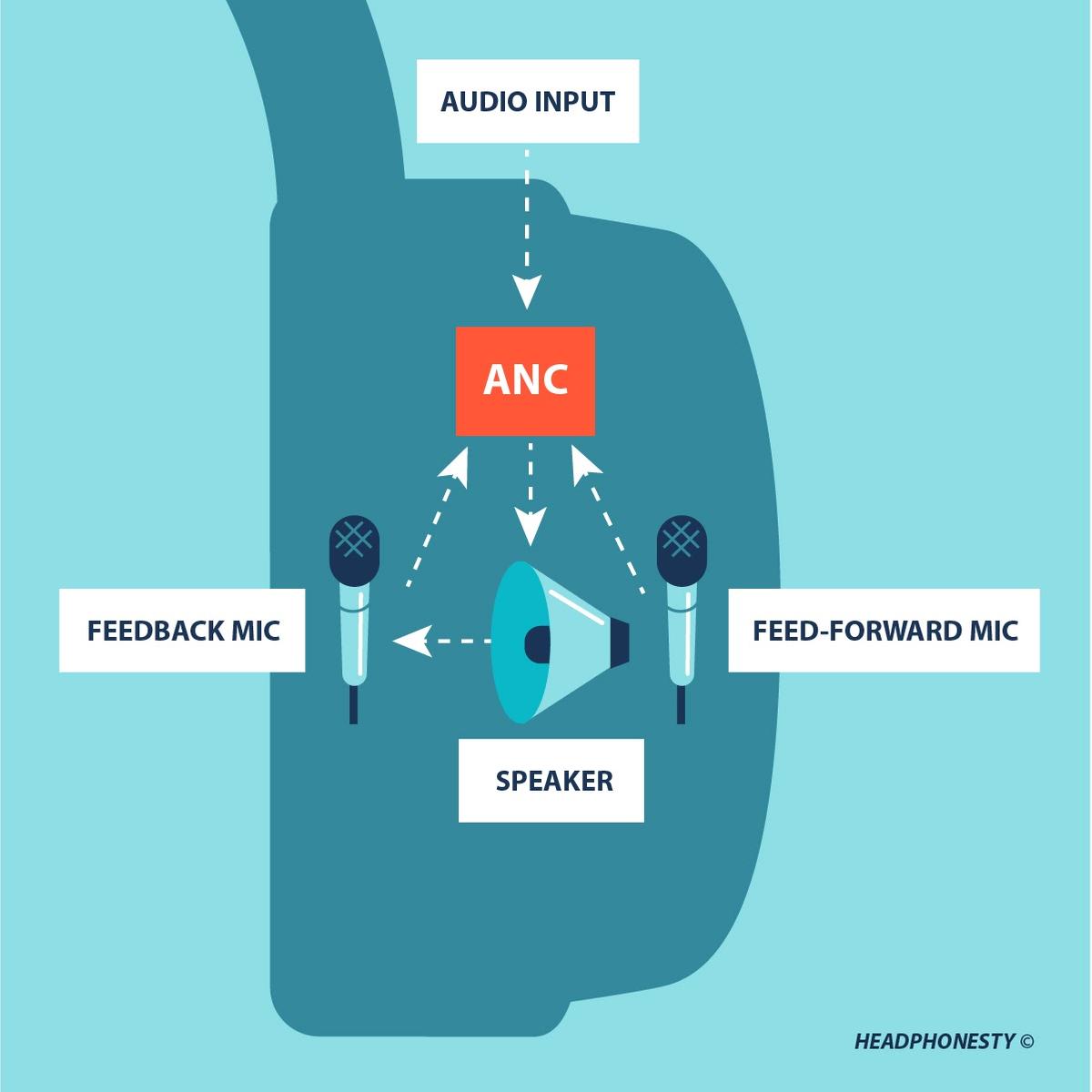
This type combines the benefits of feedforward and feedback ANC. It uses external and internal microphones for accurate noise filtering across more frequencies. However, hybrid ANC headphones are typically more costly due to the additional hardware.
Adaptive ANC
Qualcomm’s Adaptive ANC enhances the hybrid ANC concept with an extra noise-canceling processor. It auto-adjusts noise cancellation levels, allowing it to ‘adapt’ to your environment. This also offers better spatial awareness without needing a tight ear seal. Adaptive ANC is typically found in noise-canceling headphones priced at $200 and above.
Where ANC Is Best Used and Where It Isn’t
ANC headphones excel at dampening low, continuous sounds like those from jet engines or air conditioners. These sounds are easier for the ANC to counteract due to their consistency and longer wavelengths, allowing precise frequency alignment and cancellation.
As such, ANC headphones are ideal for travel or environments characterized by persistent low-frequency noise, like offices or urban centers.
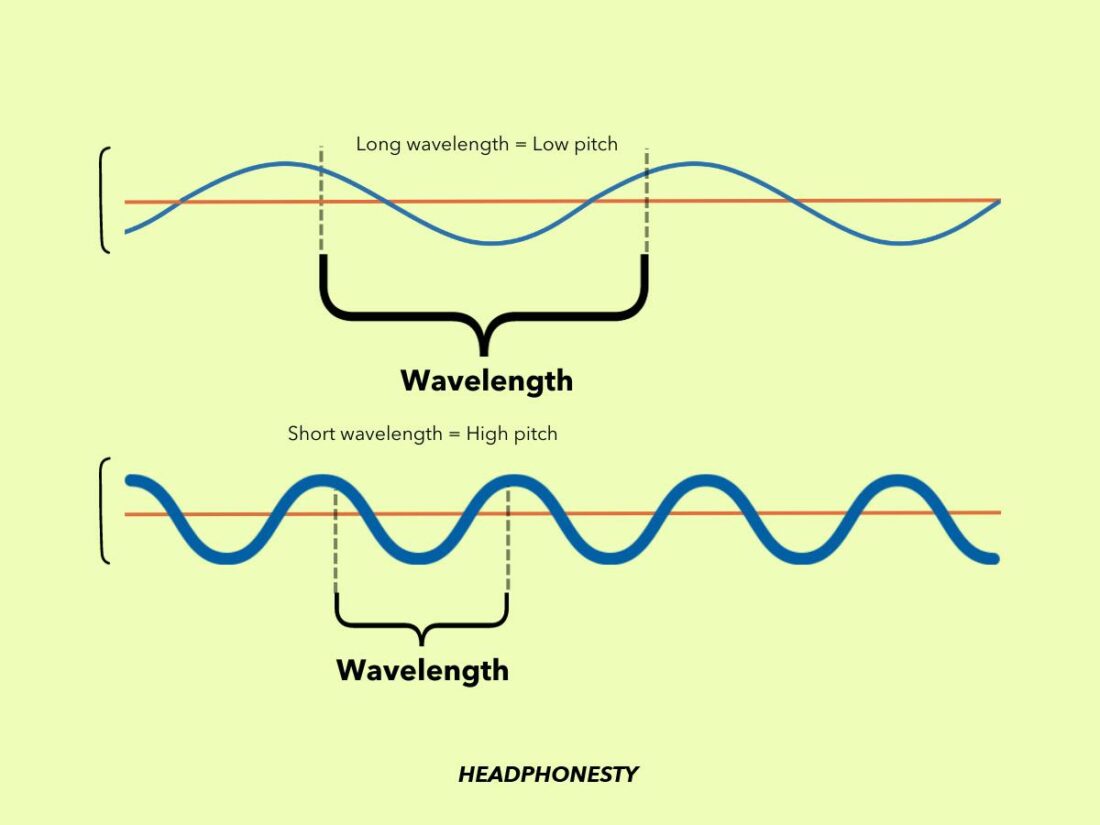
However, ANC headphones struggle with sudden, unpredictable, high-frequency sounds like gunshots because of their shorter wavelengths and the slight delay the ANC system needs to create the anti-noise signal.
Also, since they only cancel out as much as 30 dB, very loud sounds won’t be blocked effectively. Hence, they aren’t recommended for events like concerts or fireworks shows.
Alternative Noise-Canceling Options: Which Should You Go For?
Hearing protection devices (HPDs), like earmuffs and earplugs, are effective alternatives to ANC headphones. These passive noise-isolating devices rely on foam padding to muffle external noise by 15-33 dB without needing power.
Unlike ANC headphones, HPDs can protect you from sudden loud or high-pitched sounds and are akin to plugging your ears with your fingers. They’re especially beneficial during activities like shooting, lawn mowing, or live music performances where noise levels are significantly high and erratic.
FAQs on How ANC Works
- What is ANC?
- Can ANC block all noises?
- Can ANC cause hearing damage?
- Why can I still hear ambient noise with noise-canceling headphones?
- Does ANC affect sound quality?
What is ANC?
ANC (Active Noise Cancellation) is an advanced technology adopted by headphones that creates anti-noise signals to counter ambient noise and free users from any external distractions.
Can ANC block all noises?
No, ANC headphones don’t completely block all external noises. Depending on their build quality and fit, they can reduce low-frequency noise by up to 30 dB. However, there’s typically a slight delay between analyzing and counteracting ambient noise, so sudden loud sounds may still be audible.
Can ANC cause hearing damage?
No. While some report feelings of ear pressure or tinnitus, no evidence supports these claims. Such sensations arise from the brain adapting to reduced low-frequency noise. This leads to perceived ringing or a pressure differential in the ears. In fact, ANC headphones were actually designed specifically to protect aviation pilots’ hearing from engine noise.
Why can I still hear ambient noise with noise-canceling headphones?
Some external noise can still be heard with ANC headphones due to trapped air in the ear canal. This air allows sound to leak in. Without it, no sound, including your music, would be audible. Sounds with varying pitch levels, like voices, also tend to evade noise cancellation.
Does ANC affect sound quality?
ANC headphones focus on noise cancellation, occasionally compromising sound quality. The resulting audio might sound unnatural, due to the ambient noise negation process. Fortunately, many brands leverage artificial intelligence to boost sound quality. For example, Sony’s WH-CH710N headphones use AI to adapt your ANC settings, ensuring optimal sound quality.
